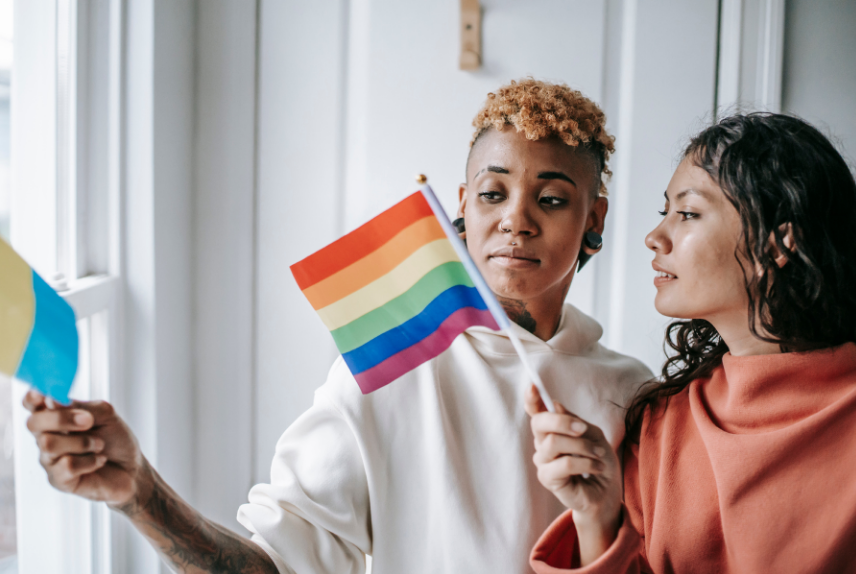In the introductory post for our new series, we talked a little bit about some terms and left on a bit of a cliffhanger. As promised, let’s define a couple of those terms, and then we can transition our first subject of the series. When we hear the word “queer,” our minds may harken back to a time when that was used as a slur against others as well as a justification for all kinds of marginalization and even violence.
Today, however, it has been reclaimed in younger generations and rebranded as an umbrella term for sexualities and genders not yet known, understood, or simple enough to define. When somebody refers to themselves as “queer,” it generally means that they are—at a minimum—not heterosexual or straight. In this context, we will use it interchangeably with LGBTQIA+. “Intersex” is the term referring to people born with ambiguous sexual biology, which can be identified in a number of ways, namely as discrepancies between hormonal makeup, chromosomes, genitalia, reproductive systems, or all of the above. Prefacing this information plays perfectly into today’s subject: LGBTQIA+ Women.
Broadly speaking, lesbians are women who are primarily attracted to and romantically involved with other women, a label that is encompassed in the term “queer.” Transgender women are women born with—what we generally categorize as—male sexual biology, who nonetheless know themselves to be women as surely as cisgender (women born with typical female sexual biology) women do. Recent research reveals that queer women are underrepresented in the workforce, especially among managerial and supervisory roles, despite sometimes being the most motivated to attain such roles and inspire others like them.
Additionally, queer women face obstacles in hiring, promotion, and advancement within the organization, wage and salary discrimination, and face increased rates of sexual harassment at work, based on gender and sexual orientation, in comparison to their straight counterparts, even in the most accepting and affirming parts of the country. Due to common experiences of such incidences, as we shared in our previous post, almost half of LGBTQ+ people are still in the closet at work, and it is safe to infer that the majority of those are nonbinary people (a.k.a., those whose genders do not align with either “man” or “woman” labels).
Where do we come in as leaders?
As we will reiterate throughout the series, self-awareness is key, and the leader sets the tone for everyone else! It is easy to overlook the ideas we accept about other people, where those ideas come from, and how they inevitably manifest in our behaviors, but leaders do the hard stuff, right? As leaders, it is on us to evaluate our own assumptions about and the accuracy of our understanding of queer women and monitor how those assumptions and understandings play out in our leadership roles.
We all come with our own preconceptions, and there is no shame in reanalyzing what we learn from the larger culture that surrounds us, and some things we may have learned are that women are less competent than men and that queer women are even less competent and/or less moral than straight women. As a leader, take a moment to reflect on your assumptions and biases related to queer women. Has it affected the decisions you have made? If so, challenge yourself to push past your biases to make the best decisions for your work and the team. What’s more, have open discussions with your team about this as it will encourage your team to be open about their own potential biases and misgivings as well, which invites the opportunity to learn how to improve.) Now that’s leadership!
There are many different avenues to take when browsing for more educational resources on these matters, but here are a couple of good places to begin: Straight for Equality; Five Ways to be a Straight Ally in the Workplace. More things you can do in your own leadership positions, now or in the future, are to push for openly queer women representation in senior and top-tier management, get involved in your organization’s LGBTQIA+ employee resource group(s), and speak up when someone says an inappropriate comment or joke at the expense of queer women, regardless of whether a queer woman is present.
Get to know the queer women around you and understand their experiences and needs in the workplace and help meet those needs. Use your leadership talents to set an example!

View comments
+ Leave a comment